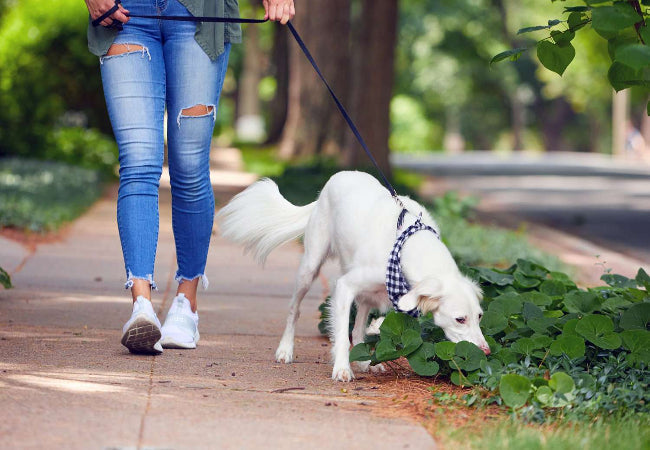Sniff Walks 2025: Why Letting Dogs Smell Everything Is Good 🐶✨

In this article
Sniff Walks 2025: Why Letting Dogs Smell Everything Is Good 🐶✨
By Dr. Duncan Houston BVSc
Do you feel like walks take forever because your dog stops to sniff every tree, bush, and fire hydrant? It might feel annoying—but as a vet, I can tell you: it’s one of the best things you can let your dog do.
I’m Dr. Duncan Houston, veterinarian and founder of Woopf. “Sniff walks” aren’t lazy or disobedient—they’re mentally enriching, emotionally balancing, and biologically necessary for dogs. Here’s why you should embrace the sniff, and how to structure a walk that benefits both of you.
🐾 What Is a Sniff Walk?
A sniff walk (sometimes called a decompression walk) is a slower-paced, dog-led walk where the goal is not exercise, but exploration.
- 🐶 Your dog chooses the pace and direction (within reason)
- 👃 The focus is sniffing, not covering distance
- 🧠 Mental stimulation is the goal—not physical exhaustion
🧠 Why Sniffing Is So Important for Dogs
- ✅ Dogs experience the world through scent (up to 100,000x stronger than humans)
- ✅ Sniffing lowers heart rate and reduces cortisol (stress hormone)
- ✅ Encourages calm behavior, especially for anxious or reactive dogs
- ✅ Builds confidence and emotional regulation
Vet Tip: Letting your dog sniff is the equivalent of you reading a book or scrolling your feed—it’s informational and relaxing at the same time.
📊 Sniffing vs Structured Walks: What’s the Difference?
| Type of Walk | Main Purpose | Who Leads? | When to Use |
|---|---|---|---|
| Structured Walk | Obedience, leash manners | You | Training sessions, city walking |
| Sniff Walk | Enrichment, relaxation | Your dog | Morning decompression, rest days, anxious dogs |
🕒 How Long Should a Sniff Walk Be?
- ⏱️ 10–30 minutes is enough to satisfy most dogs
- 🌿 Walk in quiet areas: nature trails, parks, or calm suburban streets
It’s not about miles—it’s about minutes of uninterrupted exploration.
🦴 Benefits of Sniff Walks (Backed by Science)
- 🧘 Reduces leash reactivity
- 📉 Lowers stress and anxiety
- 🧠 Helps mentally tired dogs settle better at home
- 🐾 Builds trust between you and your dog
Studies have shown that sniffing lowers canine heart rate and improves emotional resilience.
🔗 Woopf Gear for Better Sniff Walks
- Explorer Harness – Padded for long, slow exploration
- Bungee Lead – Softens tension when your dog stops suddenly
- Dual Pocket Dispenser – Reward calm behavior with treats on the go
💡 Sniff Walk Tips
- 👟 Use a longer lead (1.5–2m) to give your dog more freedom
- 🎯 Use a verbal cue like “go sniff” to start and “let’s go” to resume pace
- 🎁 Reward check-ins with praise or treats
- 🧠 Alternate sniffing and structured walking for balance
Pro Tip: For reactive dogs, start sniff walks in quiet areas where fewer triggers exist, and gradually expand their comfort zone.
💬 What Owners Say
“I used to think my dog wasn’t getting tired on walks—turns out he just needed time to sniff! His behavior improved within days.” – Angela & Buddy
“We added 15minute sniff walks every morning, and it’s changed everything. He’s calmer, quieter, and even easier to train.” – Darren W.
👩⚕️ Want Help Creating a Custom Walk Routine?
Send your dog’s age, energy level, and reactivity profile, and we’ll help you plan structured, sniff, and training walks based on their specific needs.
Final Thoughts
Sniffing isn’t a distraction—it’s a form of communication, therapy, and joy for your dog. Giving them space to explore the world through scent leads to better behavior, deeper trust, and a more fulfilled life.



